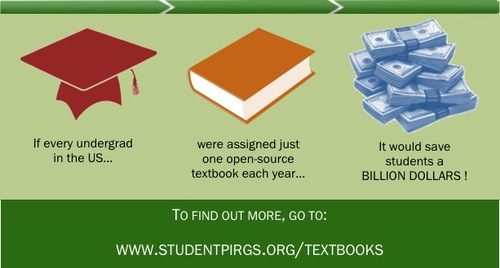Twice a year, college students trek to their college bookstore or open up tab after tab on the Internet, desperately searching for a cheaper alternative to the $200 textbook assigned for their class.
Textbook prices are simply out of control. They have increased more than 800 percent in the past few decades -- that's three times faster than the rate of inflation.
Other cost saving options like rental programs, used book markets, and e-textbooks are a temporary relief at best: their prices are dictated by the cost of a new, print edition (which has increased every year for pretty much forever).
One thing is clear: the current textbook market doesn't deliver the educational opportunity it can and should.
That's why the Student PIRGs recently released a report on an alternative textbook model that could revolutionize the industry and save students a ton of money at the same time.
The model is open textbooks -- faculty-written, peer-reviewed textbooks that are published under an open license - meaning that they are available to the public free online, free to download, and hard copies cost on $10-$40.
Our report, "Open Textbooks: The Billion-Dollar Solution," analyzes data from five pilot programs at universities around the country that encourage faculty to replace the traditional textbook they use to teach with an open-licensed textbook.
- Based on the data from these programs, the report concludes that when a student has their traditional, introductory-level textbook replaced with an open textbook, they save $128 on average per course.
It's worth noting that's a conservative estimate. Just using OpenStax's (an open-textbook publisher based at Rice University) 15 textbooks, we could replace more than 10 million traditional textbooks and generate a billion dollars in student savings. That's not to mention the other 140 open textbooks listed in the Open Textbook Library at the University of Minnesota.
That's the crazy part: those textbooks are available right now, for free, to the general public. That means any professor -- with just a click -- could download and assign an open textbook for their class tomorrow (though starting next semester is more likely).
You may be asking: why isn't everyone doing this? Well - for more in-depth info and some open textbook FAQ, you can check out our website.
But, simply put -- we need faculty to make the switch and drop their traditional textbook for an open textbook. It's not hard, but it's not easy, and institutions can make a huge impact by providing training and resources for interested faculty to make the switch.
It's time to break free from the traditional textbook industry.
This post was written with the help of Robert Donoghue.


